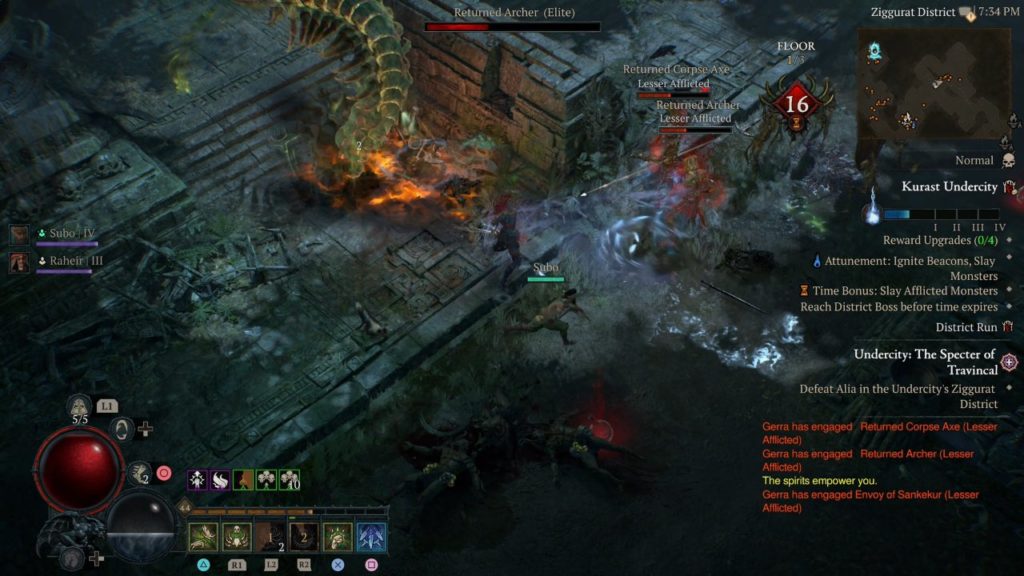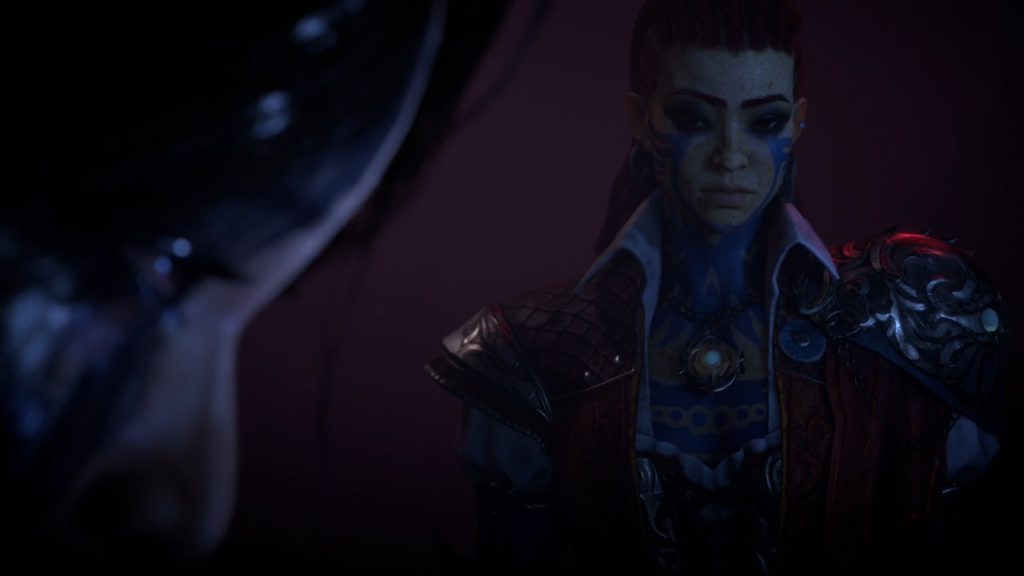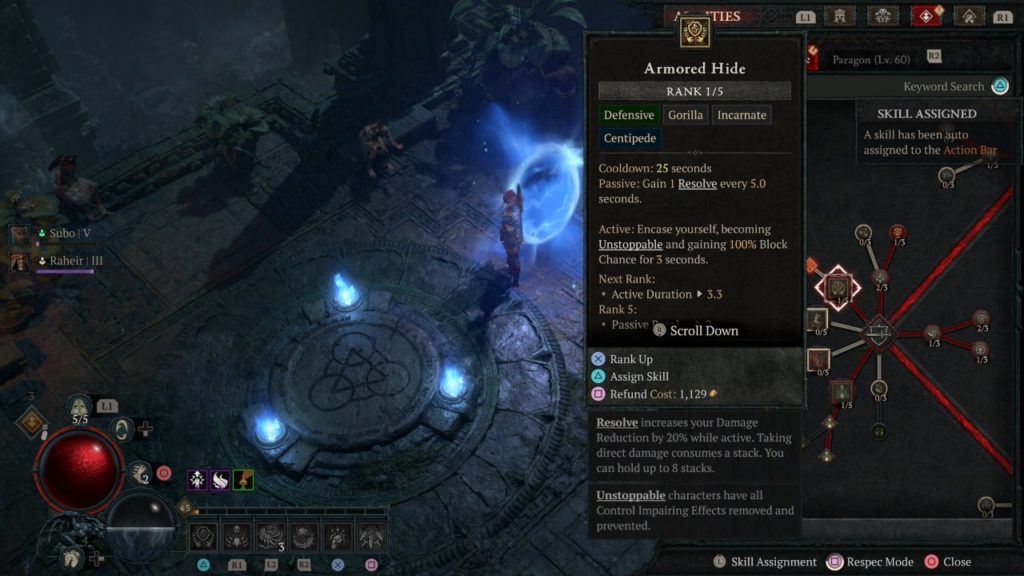Diablo 4: Vessel of Hatred review
I don’t think it’s unfair to say that Diablo 4 has been a bit of a rollercoaster since its launch last year. A solid campaign experience was hampered by an always-online requirement that persists to this day and which the game could genuinely thrive without, while the endgame felt a little lacking in anything but grind. But then, against expectations, Blizzard turned it around. From Season 4 onwards it became a different game, with improved loot, better quality of liife, and more variety in gameplay and build-craft. Heading into Diablo 4: Vessel of Hatred, I can honestly say I was incredibly excited to see what Blizzard had done with the new class and setting. I was not disappointed.
Vessel of Hatred is an excellent DLC with a decent-sized campaign expansion and a fantastic new class in the Spiritborn. The story follows the end of the main campaign, with your rugged hero searching for Neyrelle, the teenaged girl burdened with carrying the Soulstone of Mephisto, Lord of Hatred and father of the previous antagonist, Lilith. Playing on a pre-release server with a new character, the continuation of the story felt a little odd, as it will for anyone going into the expansion at the same time as starting the new Season with a new character. That said, though, it’s hardly a deal-breaker.
Regardless of who you play as, the campaign introduces us to a slightly evolved Sanctuary. The defeat of Lilith and corralling of Mephisto has done nothing to brighten the grimdark world, although the Church has become even more zealous in the wake of its pyric victory in Hell. The defeat of Lilith is to be celebrated, while the death of Inarius has destabilised the Church, giving rise to fanatical madmen like Urivar, a brutal crusader who serves as one of the main antagonists in Vessel of Hatred.

As the Church seeks Neyrelle and the missing Lorath, their search inevitably leads them to you, the Wanderer, and as a result you end up half dead, washing up in the jungles of Nahantu where an old seer named Eru joins your quest. The god Akarat is an ancient enemy of Mephisto, and his followers here are determined to see the Lord of Hatred destroyed once and for all. Although much shorter than the main campaign, the expansion story doesn’t really let up, launching you from quest to quest as you race to find Neyrelle and relieve her of her terrible burden. There are fewer flashy CGI cutscenes and more in-engine narrative moments, as your character integrates more into conversations and gets more animation overall. That your custom character looks a little rougher than everyone else in a scene is forgivable when it makes you feel so much a part of the world instead of just an outsider looking in.
My only complaint is that the world of Sanctuary was already so diverse, with dense jungles, shadow-haunted swamps, arid deserts and iceblown bluffs, that the new biome of Nahantu doesn’t really feel new. Some of it is very pretty, particularly the deeper jungles, but Blizzard might have done too good a job in the first place for us to feel the benefits of a new region now.
Regardless, the star of the show here is arguably the new class. The Spiritborn feels almost like a mix of Diablo 3’s Monk and Witchdoctor, with lightning fast quarterstaff combat and mastery over the elements. So far, so Sorceror, right? Well the Spiritborn distances itself by being less focused on wielding the elements themselves and more on channelling their natural energies through four great spirits.

Jaguar skills are aggressive and powered by fire; Eagle skills strike fast and channel the power of lightning; the Gorilla focuses on protective earth magic; and the Centipede spreads poison and entropy. I’m not exaggerating when I say I had more fun experimenting with the Spiritborn than I did with the other classes. The four tenets have such different skills and styles that you could specialise or generalise and still come out with powerful builds. In the end I focused primarily on Centipede skills, dishing out poison with a few Eagle Skills for DPS and one from the Gorilla school just for the survivability. I didn’t intentionally leave out the Jaguar, and there are plenty of options to make those skills work.
That the Spiritborn fits so effortlessly into Nahantu is no surprise, but that the class also feels absolutely at home in the rest of Sanctuary is impressive. The increased skill-point level cap (now 60) and skill point total also combines with extra Paragon boards and mechanics to deepen character progression the way Season 4 overhauled the loot systems. All in all, it makes the journey through 1 to 60 a more engaging, exciting experience while sacrificing none of that all-important grind.
Elsewhere there are additions like new mounts (yes, you can have a giant cat now) and the excellent Runeword system borrowed almost entirely from Diablo 2: Lord of Destruction. You can now find Runes and combine them in gem slots to create words of power that trigger buffs and boons on specific ability uses. For example, you can equip a combination early on that gives you back some of your primary resource when you evade. There are likely dozens of combinations, but my experimentation barely scratched the surface.

Another element evolved from a previous entry is the mercenary system. You’ll meet Raheir early on, who will invite you to the Den, a new hub area where you can assemble the Pale Hand, his old mercenary unit. The demonic Aldkin, bounty-hunting Subo, and cannibalistic warrior Varyana will all join you upon the completion of a short questline for each of them. Once you’ve recruited them, you can choose one to be by your side at all times and another who will appear to perform a specific action when you do, so a ground pound whenever you heal, for example.
They don’t offer as much chitchat as the followers in Diablo 3, and don’t have the customisation options that they did, but it’s always handy to have someone around in a fight for the extra crowd control. I found myself wishing there was a bit more to the system than sporadic rewards for levelling up your “rapport” with them, and I’m almost certain Blizzard will add to the system in future seasons.
The primary new PvE activity is the Undercity, a fast-paced time-trial-like dungeon experience that sees you killing elites and bosses to extend your countdown timer as you attempt to reach and defeat a boss before the time runs out. If ever an element of Diablo 4 was crying out for build loadouts, it’s this. Being able to dish out massive DPS while staying alive is even more crucial here than in the campaign or even Nightmare dungeons, as the challenge ramps up alongside the rewards as you blast through randomly-generated dungeons trying to reach the boss.
Overall, though, Diablo 4: Vessel of Hatred is a superb continuation of the original campaign with some wonderful quality of life improvements and a fantastic new class. An overhauled difficulty system also simplifies all the messing about, allowing you to choose from a number of difficulties up to level 60, when you can complete a new activity to unlock Torment, your gateway to Uniques and Mythic item drops.
There’s so much here that even going back to Helltides and Nightmare Dungeons feels new and fresh, and revisiting the existing classes feels just as exciting and enticing as the Spiritborn. Nahantu would have benefitted from a little more uniqueness, and the mercenary system needs tweaking to make it feel more essential, but apart from that Diablo 4: Vessel of Hatred is a worthy adventure and a great reason to head back to Sanctuary – if you ever left in the first place.




